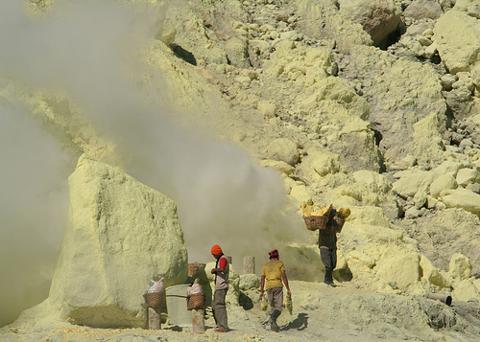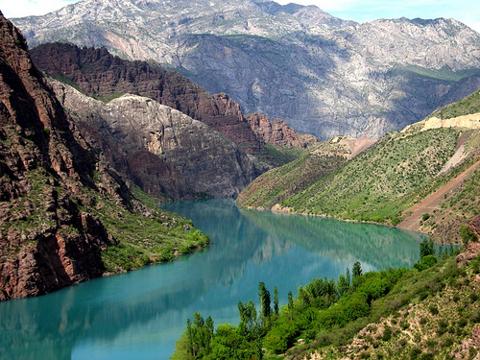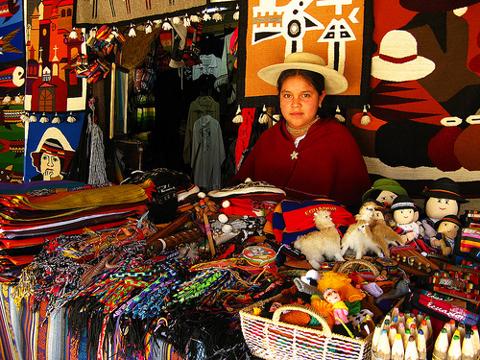Re: The Worst Mining Jurisdictions in the World...
in response to
by
posted on
Nov 07, 2009 08:07PM

Crystallex International Corporation is a Canadian-based gold company with a successful record of developing and operating gold mines in Venezuela and elsewhere in South America

Thanks you Info, just wanted to post the full list
Investors spend a good deal of time determining the best places to invest, but do you ever wonder which countries are the worst places in the world to invest? If you invest in mining companies, you should. After all, when you invest in a mining company, you’re not just investing in a company but also the government and communities in which the company is exploring for and developing deposits.
So much about the success of a project depends upon the jurisdiction in which it exists that most institutional investors simply won’t put money into a company operating in certain countries. Sure you can find a deposit in Venezuela, for example, but leaders like Hugo Chavez, who are in the habit of decreeing bizarre legislation such as a recent ban on singing in the shower in Venezuela also have a penchant for stealing mineral deposits from whomever they please.
The Fraser Institute’s Survey of Mining Companies 2008/2009 is one measure of how mineral endowments and public policy factors such as taxation and regulation affect exploration investment in countries around the world. This year the survey considered 71 countries based on factors such as these and gave each a score out of 100. The findings were fascinating, to say the least. In this pictorial essay, we’ve compiled the Worst 10 performers from the Fraser Institute’s Policy Potential Index.
Keep in mind, however, that just because a country is listed at the bottom of the list doesn’t mean that some companies won’t find staggering success operating there. In September this year, for example, Dynasty Metals poured its first gold at its Zaruma mine in Ecuador. That country is the second worst performer on this list, but that hasn’t stopped Dynasty from bringing the benefit of revenues to its shareholders.
Additionally, countries can move through the rankings quite quickly between years. The average score of the Canadian provinces and territories improved by 3.8 points from last year. On the other hand, Latin American scores continue to decline. In the 2005/06 survey, the average score was 51.2 compared to 37.3 in this year.
10. Indonesia, Grade 25.1/100

Assuming industry “best practices”, the first country on our list would actually be the 10th best country on the Policy Potential Index, according to the 658 survey responses the Fraser Institute received. That’s probably because Indonesia is one of the world’s largest producers of tin (ranked 2nd after China), coal (ranked the 3rd largest thermal coal exporter after Australia and South Africa) and copper (ranked 3rd largest, after the USA and Chile). It also produces significant quantities of gold, nickel and sulfur (above).
Whereas Latin American countries so often struggle with indigenous opposition to mining companies holding lands, Indonesia has deep issues simply creating and managing a regulatory system. One CEO said, “In Indonesia, disputes between local and federal government have in several cases given two different companies access to the same ground.”
Major issues among respondents were security, political stability and infrastructure, which paints a familiar picture of the Indonesia we so often see in the headlines: Religious tension has increasingly brought violence; Indonesia has the largest population of Muslims in the world, and is increasingly a center for extremism.
DRC Congo is another one of those countries that has vast potential. Assuming industry best practices, the Fraser Institute survey respondents ranked it 19 out of 71 countries. Diamonds, gold and rare minerals are plentiful. However, one of the most important minerals in the DRC is coltan, from which niobium and tantalum are extracted. The latter two minerals are important in the manufacture of cell phones, DVD players and computers.
The trouble in the DRC is a war that has raged on off since 1996 that has claimed from 5 to 6 million lives, depending on the report you read. The conflict is complex, involves several neighboring countries and is partly rooted in disputes over land ownership, but mostly it is a battle for the vast natural resources the region possesses.
8. Kyrgyzstan, Grade 22.5/100
Kyrgyzstan was a new addition to the survey this year (as were Guatemala and Norway). Although this country is not particularly rich in resources, it still places 4th overall in the category of Room to Improve. One junior mining executive wrote, “Kyrgyzstan! The government is totally corrupt and ignorant of modern economics.”
While Kyrgyzstan enjoys fewer problems when it comes to relations with indigenous peoples and policy regarding protected wilderness areas, it’s in the realms of policy, taxation, political stability and infrastructure (for which Kyrgyzstan found itself in last place) that this nation shows its true colours.
After protesters and opposition party members deposed the last government in the 2005 Tulip Revolution, the country has struggled to stabilize – and modernize. Nevertheless, little historic exploration and substantial gold reserves make this an attractive target for some exploration companies.
7. Zimbabwe, Grade 19.1/100
Zimbabwe is one of the most tragic stories in most every regard. The country’s dictator is a complete nut-job who has abused his power more openly than just about any world leader outside of Saddam Hussein. Moreover, Zimbabwe once enjoyed a prosperity like few other countries in Africa. Today the country has little economy to speak of, almost no infrastructure and what political structures remain are of little actual benefit to anyone but a small group of Robert Mugabe supporters.
As the President of one company with over $50 million in annual revenues stated, “Zimbabwe—would anyone go there?”
6. Bolivia, Grade 16.5/100
In the 470 years since the Spanish Conquest, Evo Moralez is the first indigenous leader of Bolivia. For resource investors, that’s the end of the good news. Moralez, a leftist of the same stripes as Hugo Chavez, in his first term in office nationalized natural gas, mining and telecommunications companies. And he’s just getting going. With another election due to take place this December, most analysts expect more nationalization in a post Moralez victory. Although 79% of respondents realize that Bolivia has mineral potential — given no land use restrictions — this is simply not a safe place to put investment dollars.
5. India, Grade 16.2/100

India is a curious case when it comes to foreign investment in mining. While the pool of labour in the country is generally excellent, India’s infrastructure, existing geological database and regulatory duplication and inconsistencies make the place often a quagmire of red tape and chaos.
Nevertheless, mining in India is a huge industry. An estimated one million people, including contract workers, are engaged in mining in India, the world’s second largest mining workforce after China’s.
However, in mining, India has often presented unwieldy barriers to entry. Canadian mining companies have discovered it’s difficult to reach lease agreements on land. As a message on India’s Ministry of Finance website states, “Foreign investors should be prepared to take India as it is with all its difficulties, contradictions and challenges.” That’s as clear as mud!
4. Honduras, Grade 11.8/100
Here the score starts sinking rapidly. Honduras is one of the western world’s most underdeveloped countries. Hurricane Mitch destroyed much of the country’s infrastructure along with the banana crop, the country’s third most important source of agricultural export revenue — who hasn’t eaten Honduras bananas their whole life long?
Mining investment is seen as a potential boost to the economy; Honduras produces lead, zinc, silver as well as gold and copper. The Fraser Institute found that Honduras struggles in many respects including political stability, quality of infrastructure and concerns regarding aboriginal land claims.
3. Guatemala, Grade 5.1/100
There are just a handful of mining companies still operating in Guatemala, largely due to issues surrounding indigenous groups. While companies like Inco for years operated in Guatemala, which is rich in antimony, lead, tungsten, nickel and copper, the country’s weak governments are typically short on clear mining regulations. The result has too often led to disenfranchised and poor indigenous communities around mine sites. Today, new projects are often met with resistance.
To be sure, Guatemala has great promise: In the Fraser report, 74% of respondents stated that country has mineral potential — assuming no land restrictions were in place. However in every other respect, the CEOs questioned said the country did not encourage investment, particularly when it comes to agreements with the government and communities.
2. Ecuador, Grade 4.1/100
The second lowest scorer on the Policy Potential Index is Ecuador. Surrounded by Columbia to the north and Peru to the east and south, Ecuador is a mineral rich country, but with deep political fissures and indigenous struggles. Ecuador has one of the world’s worst policy environments, but would tie for top rank in investment attractiveness under a “best policy” regime.
Perhaps that’s why Ecuador has been a very successful choice for some resource companies. Dynasty Metals and Mining has the producing Zaruma Gold Project, the first large scale modern mine and processing facility in Ecuador. The project was constructed on budget in a country that lacks an infrastructure for large scale mining.
Its mineral resource potential notwithstanding, indigenous uprisings, uncertainty regarding existing regulations, taxation nightmares and bureaucratic red tape make Ecuador the country with the most room for improvement!
1. Venezuela, Grade 3.7/100
Gasoline smugglers (pimpineros) with their contraband fell into the water of the river Táchira. One load of gasoline barrels may reach over 200 kilograms. [Cúcuta, the Colombia-Venezuela frontier]
As one company Vice President in the report said, “In Venezuela, if you build it, Hugo Chavez will steal it.” It doesn’t matter much how you look at Venezuela, this is one tricky place to build a mine. While the country ranks poorly in infrastructure and existing geological data, it’s right at the bottom when looking at political stability, labour regulations and security.
Today, Hugo Chavez’s government continues to seize control of mines in the country. On October 27, U.S. mining company Gold Reserve Inc. said that the Chavez regime had seized control of its lucrative Brisas del Cuyuni project in southeastern Bolivar state.
The trouble is, Chavez appears incapable of running mines himself, except into the ground. The result is increasing poverty and corruption, crumbling infrastructure and a country that is sliding backward economically and socially. Even Cuba is heading in the opposite direction.